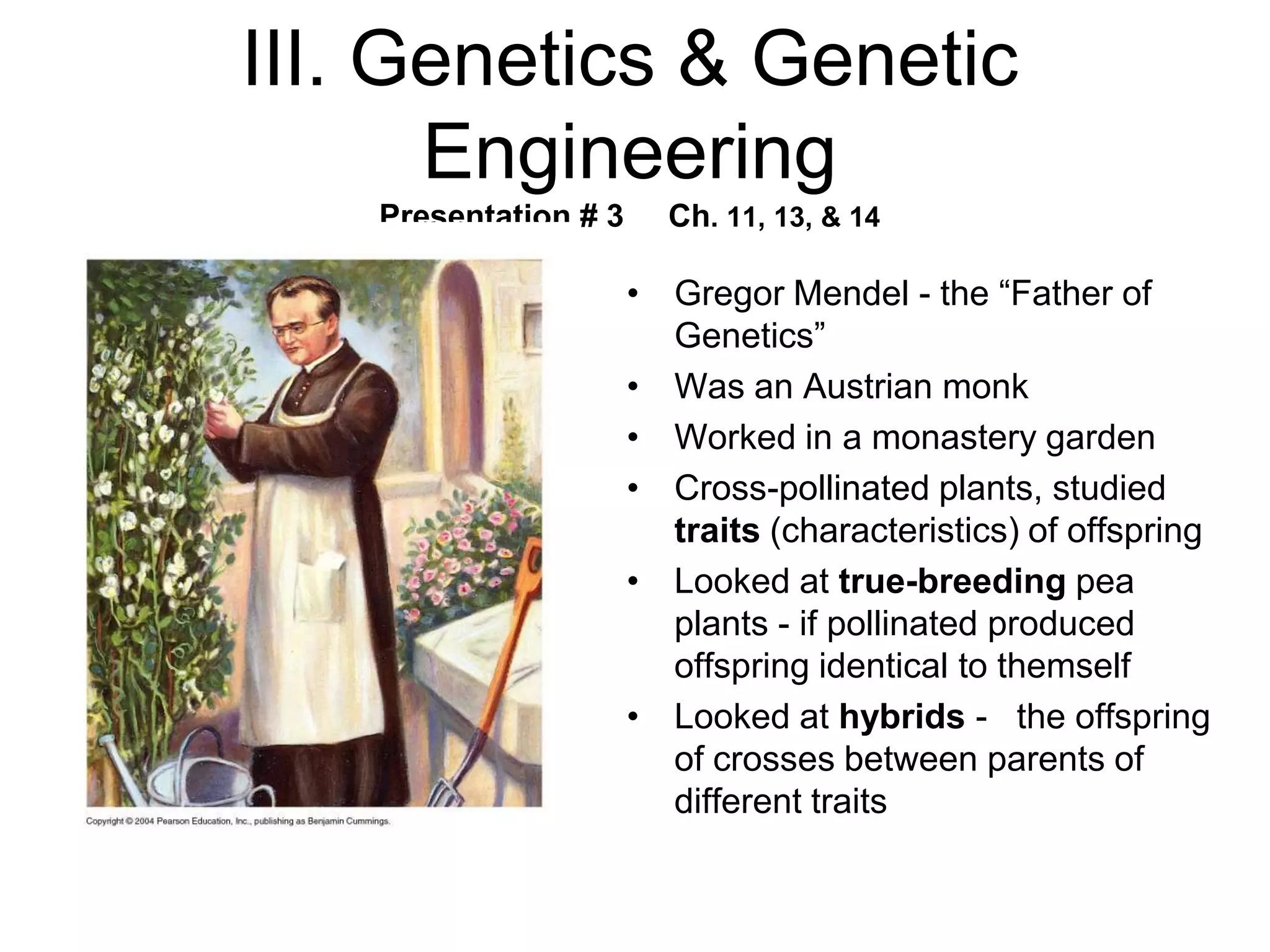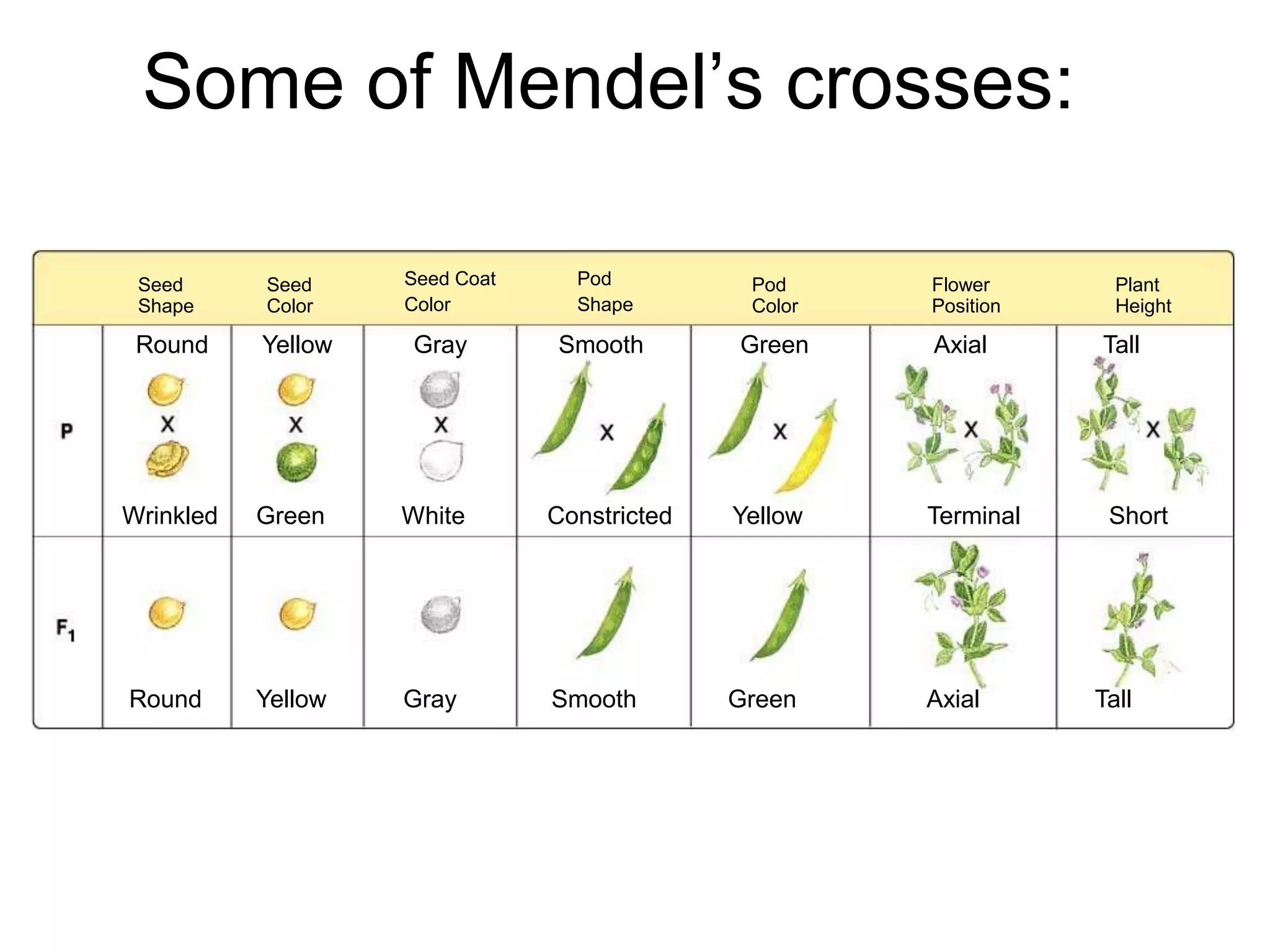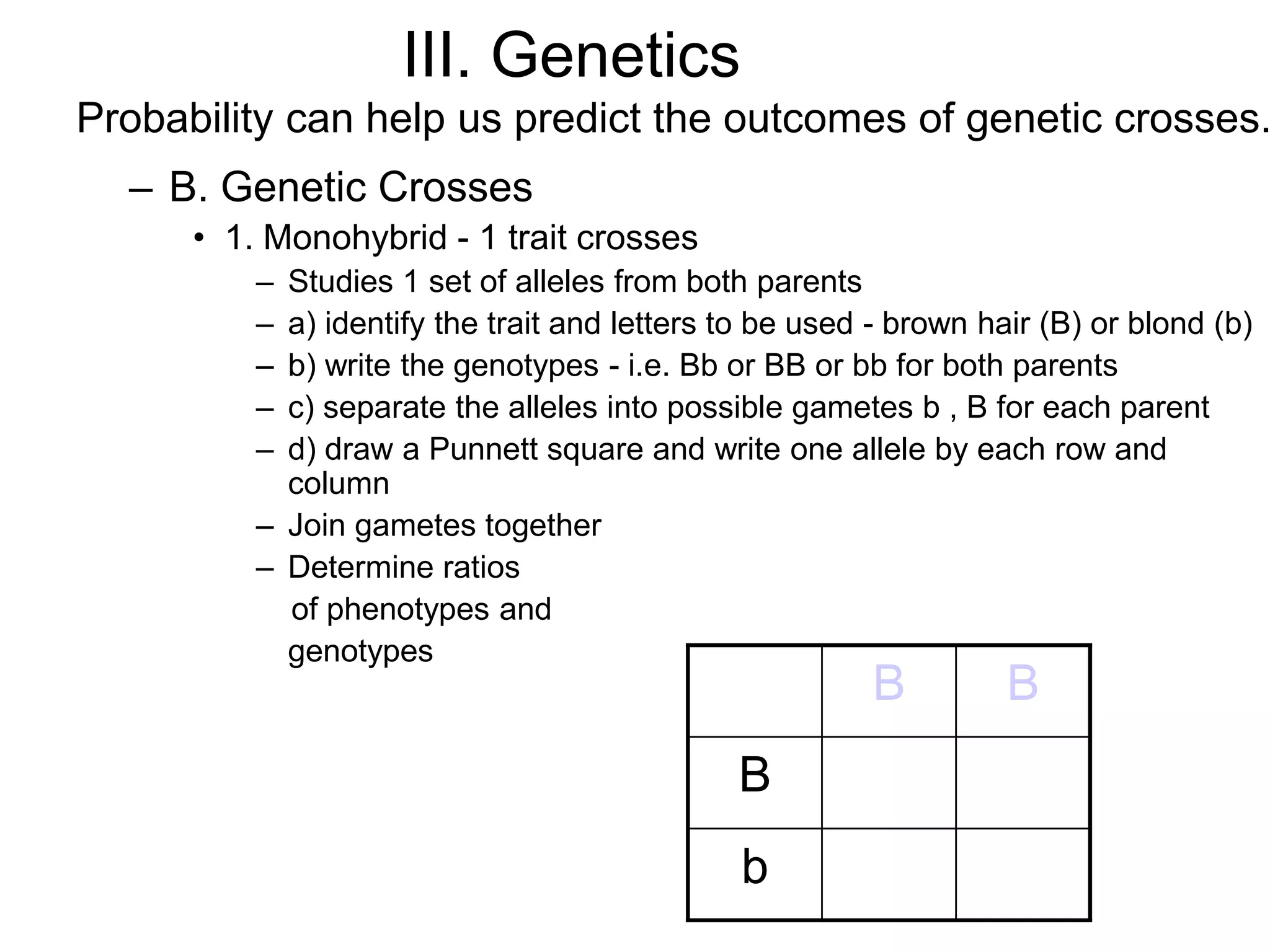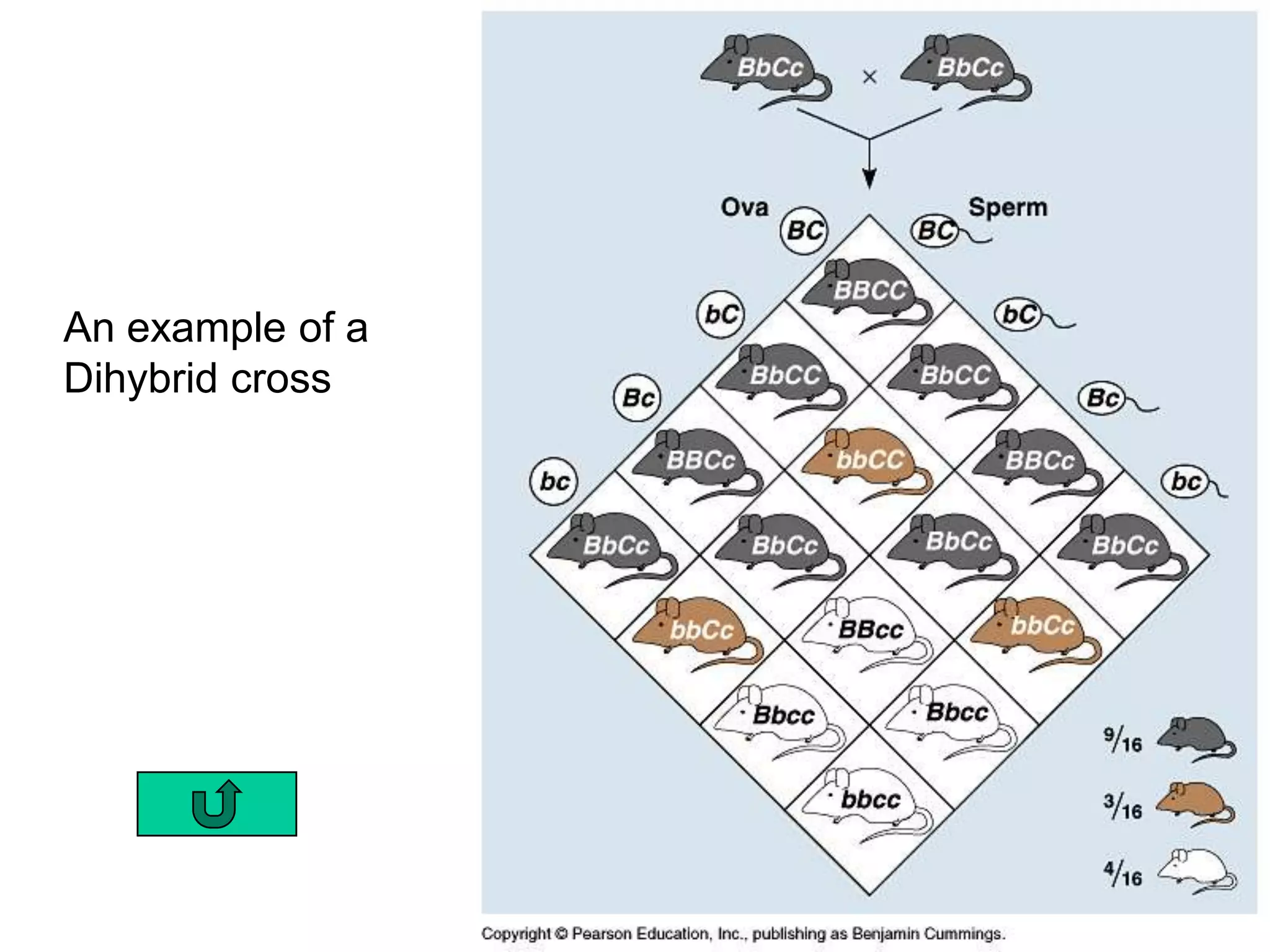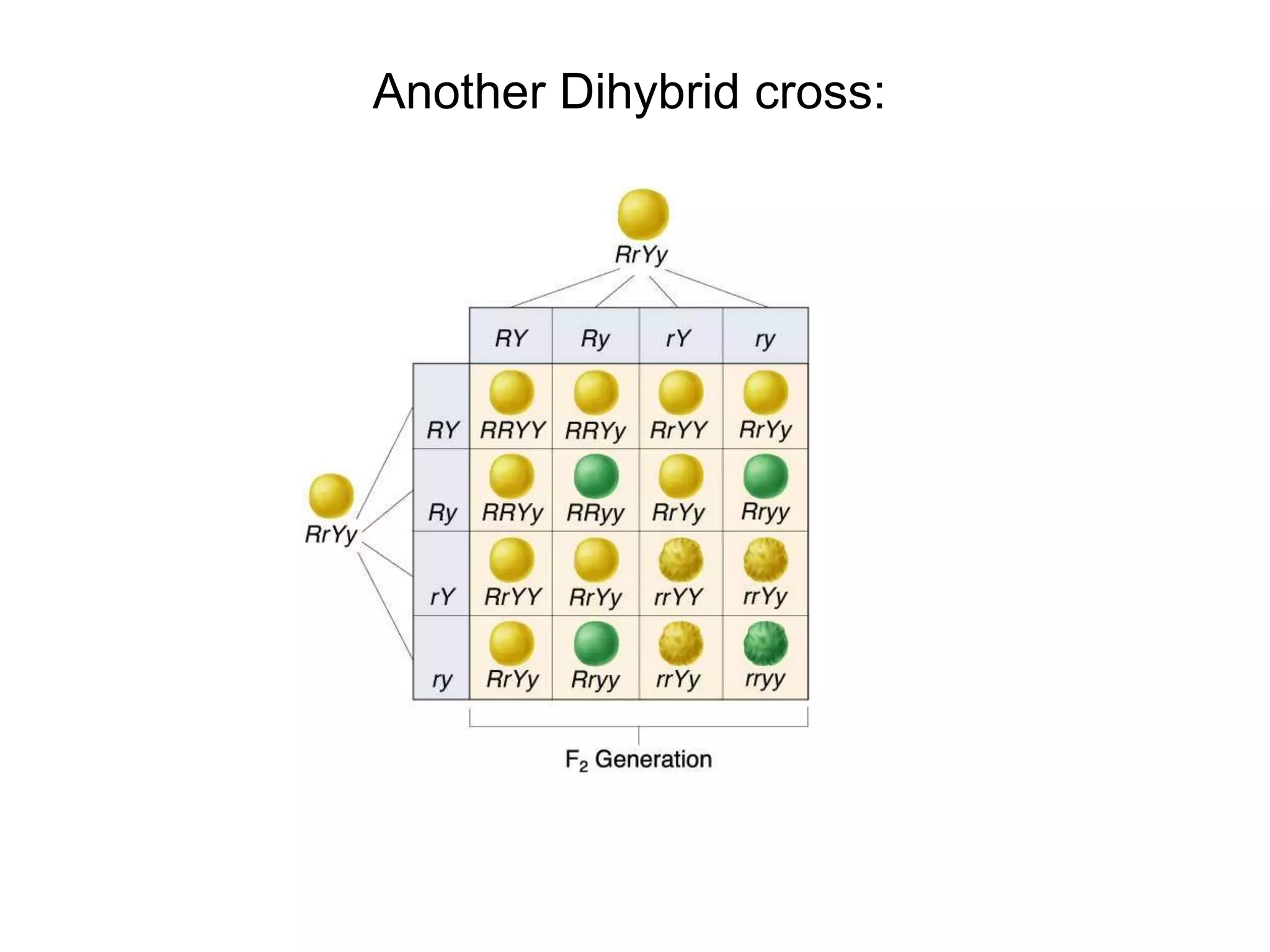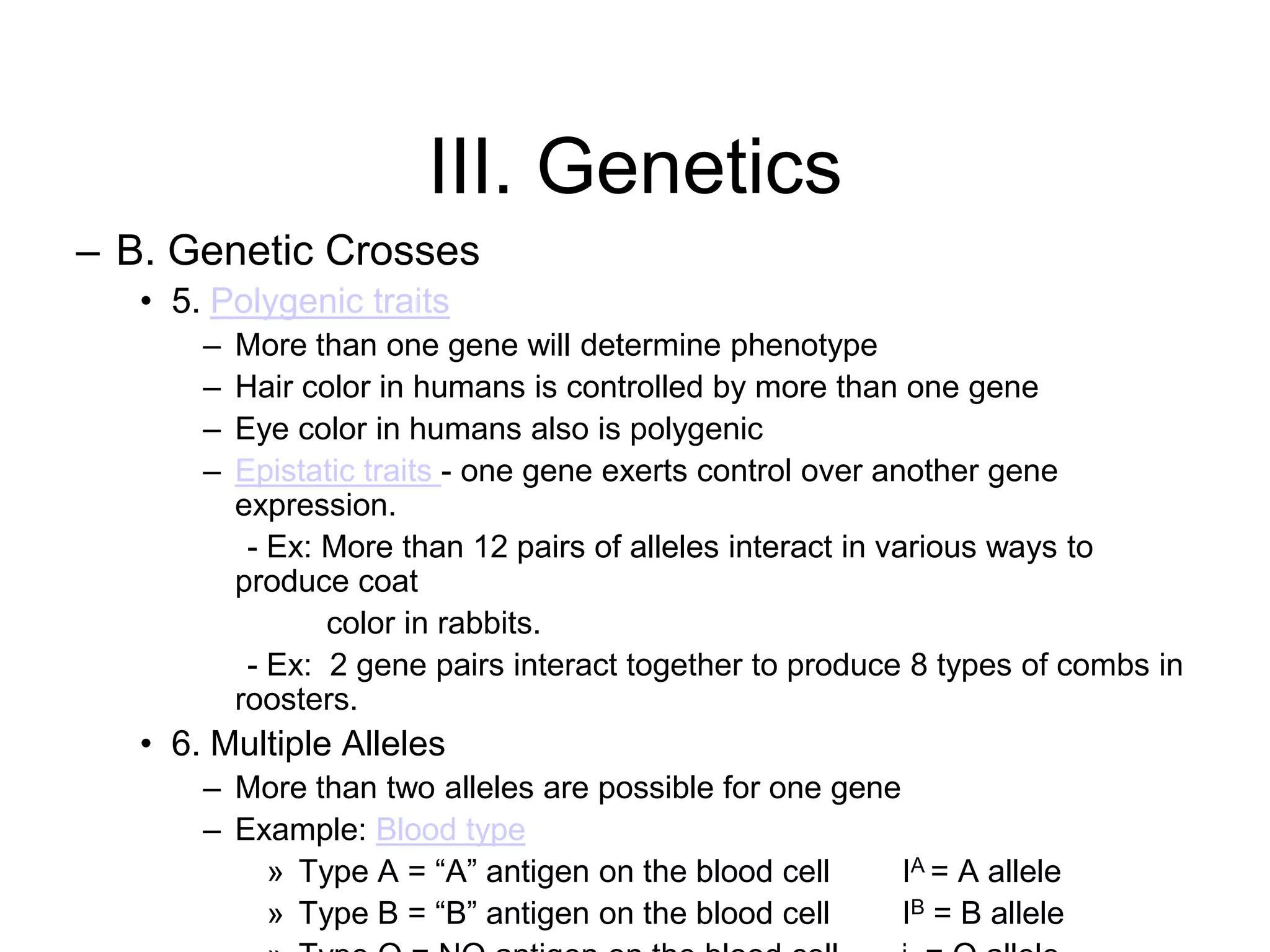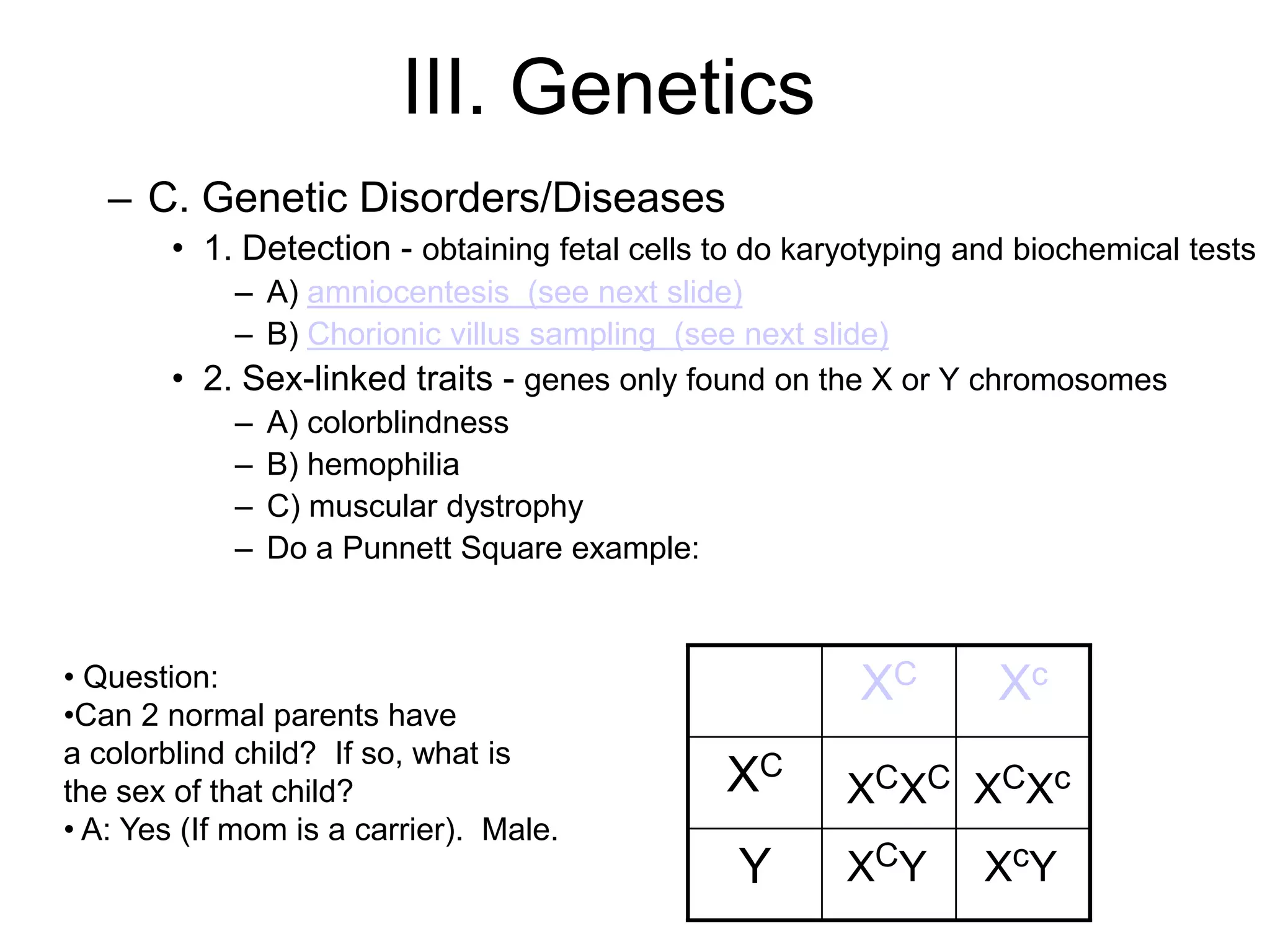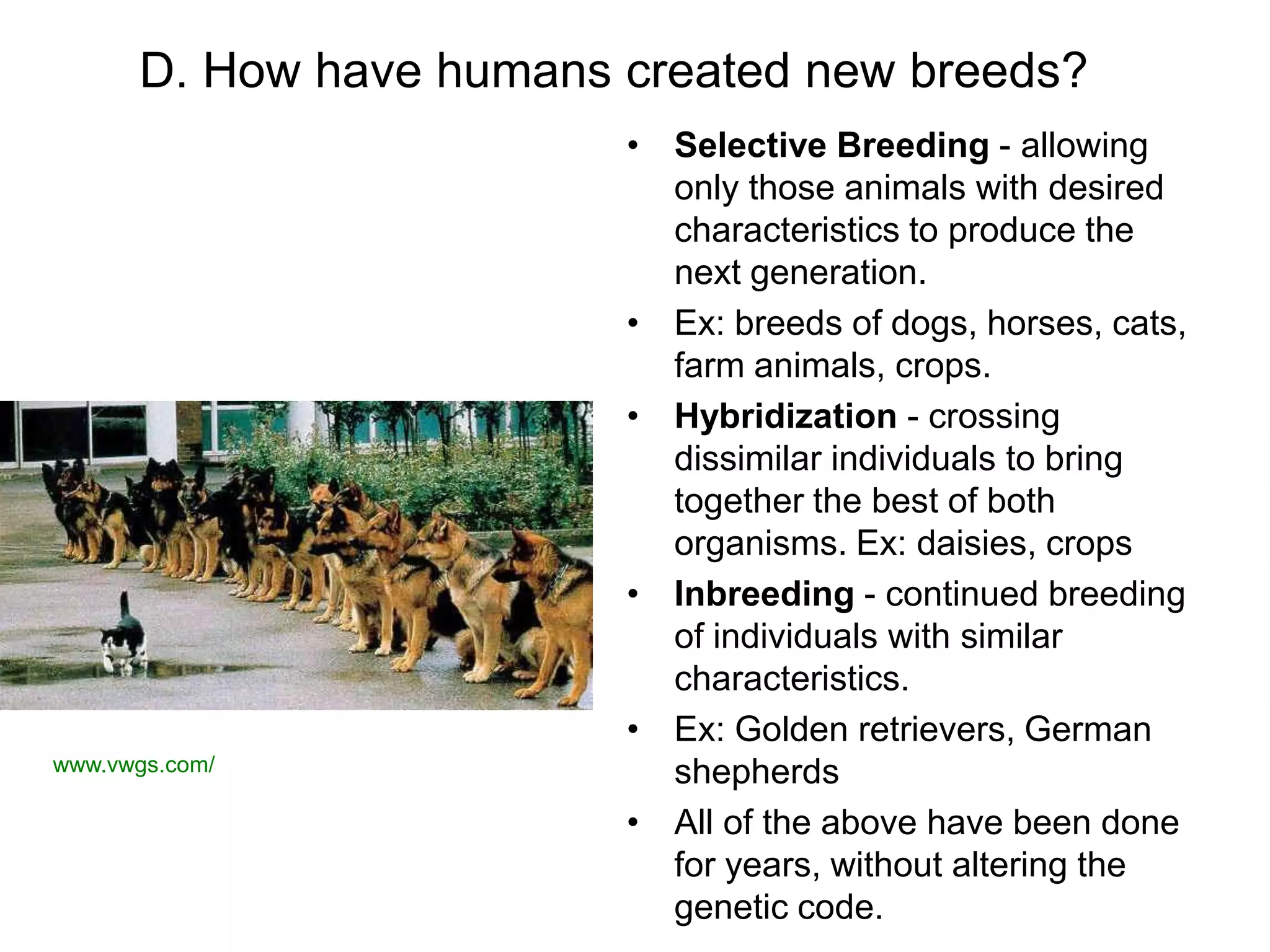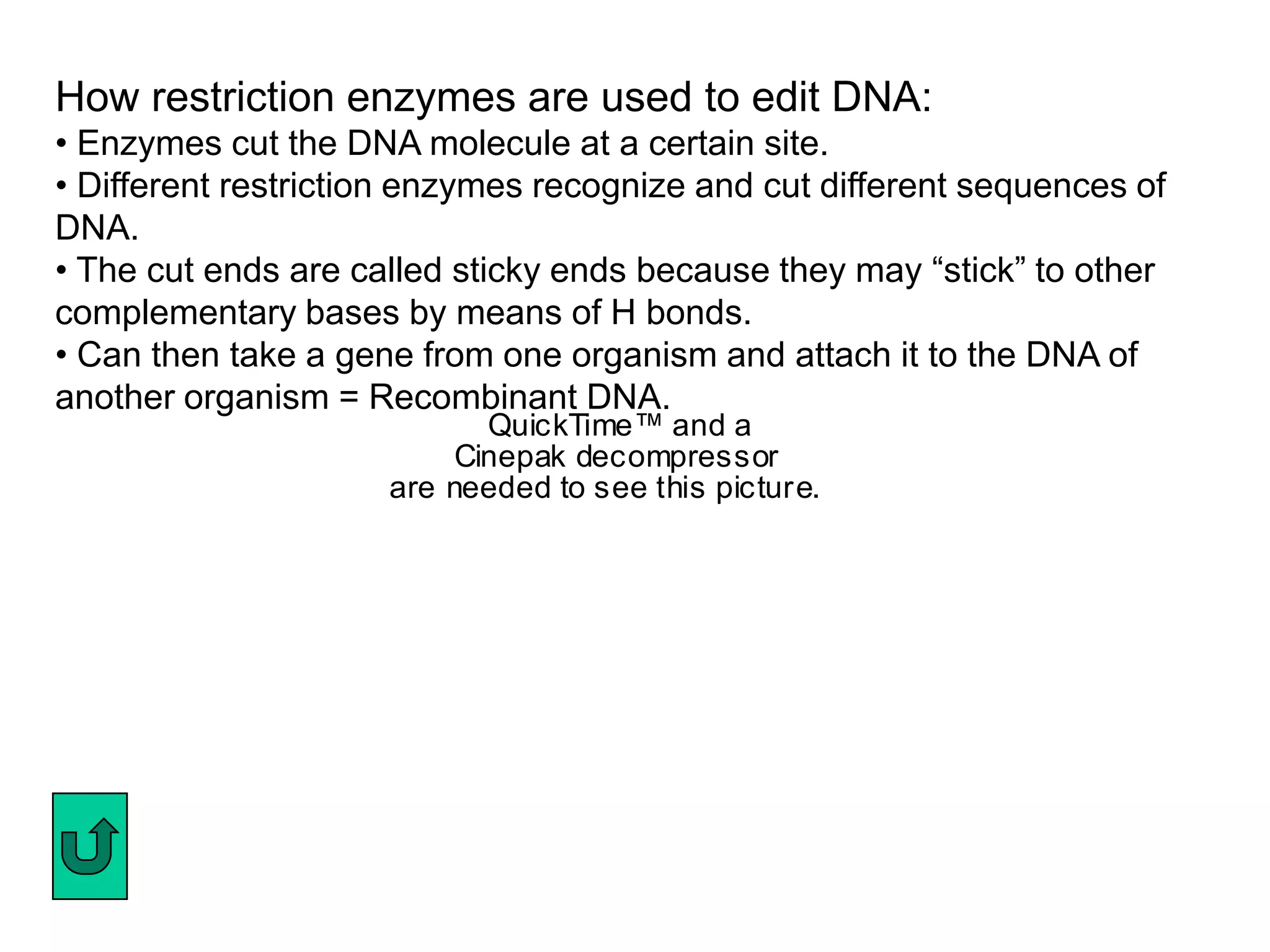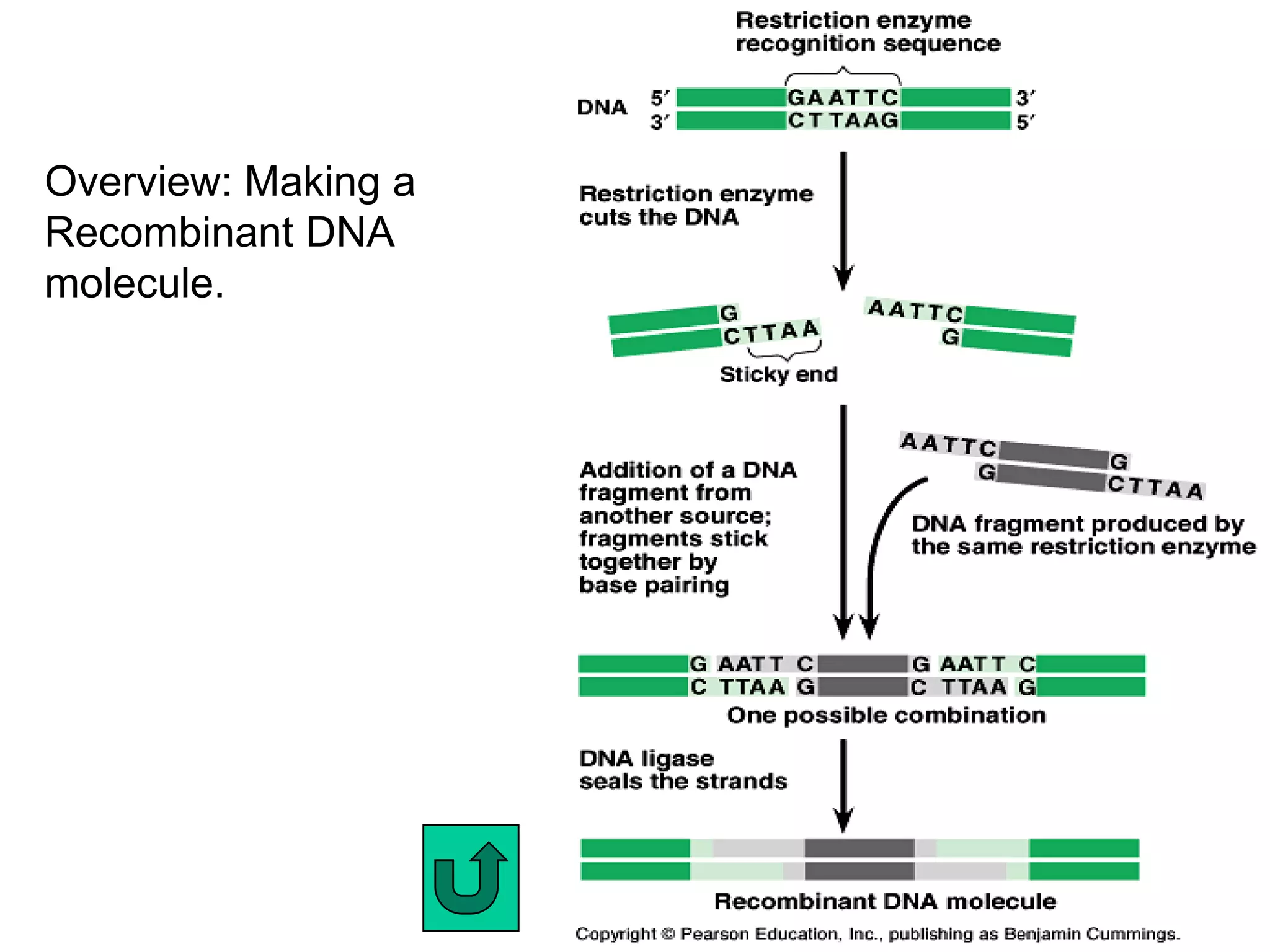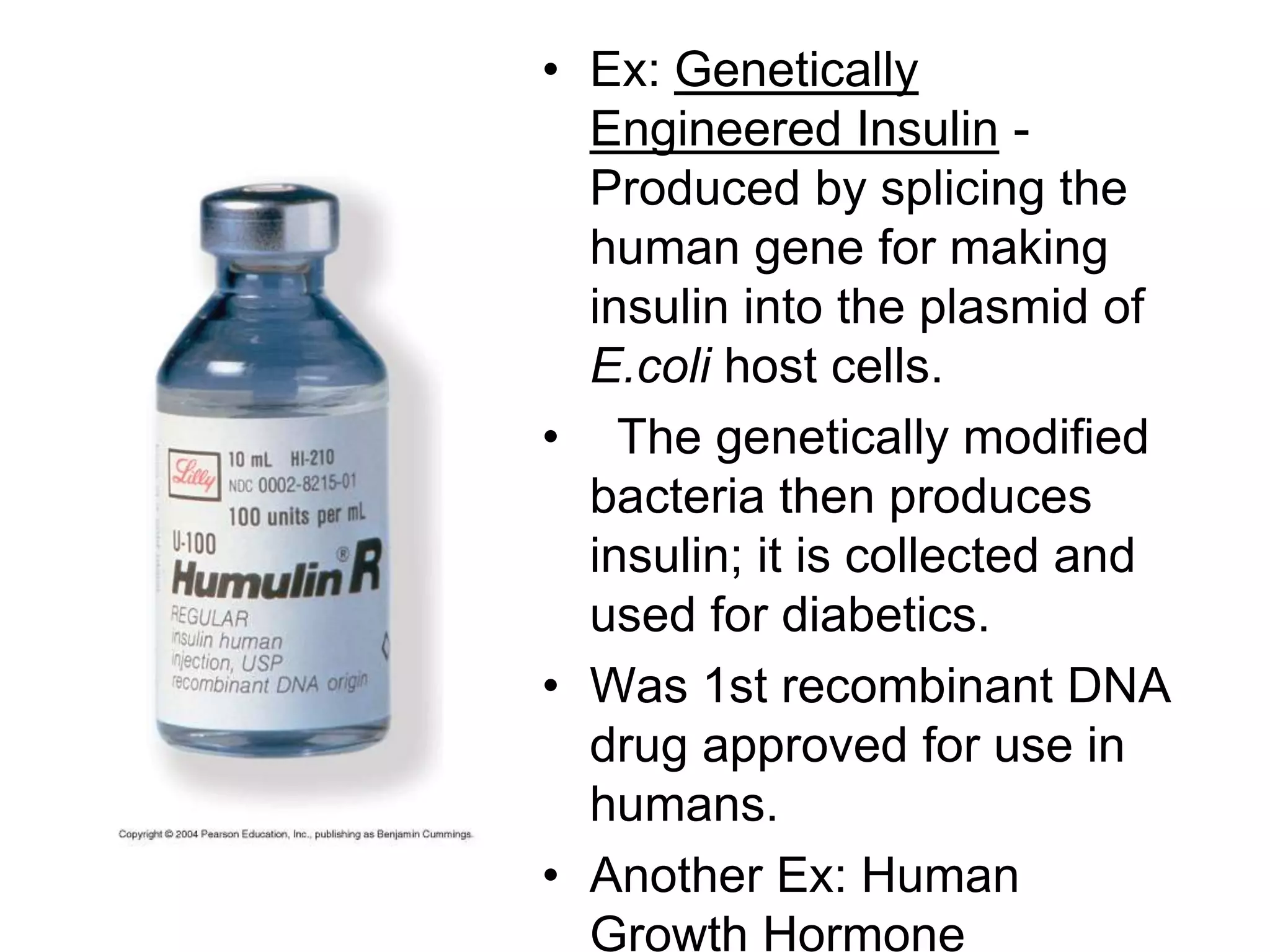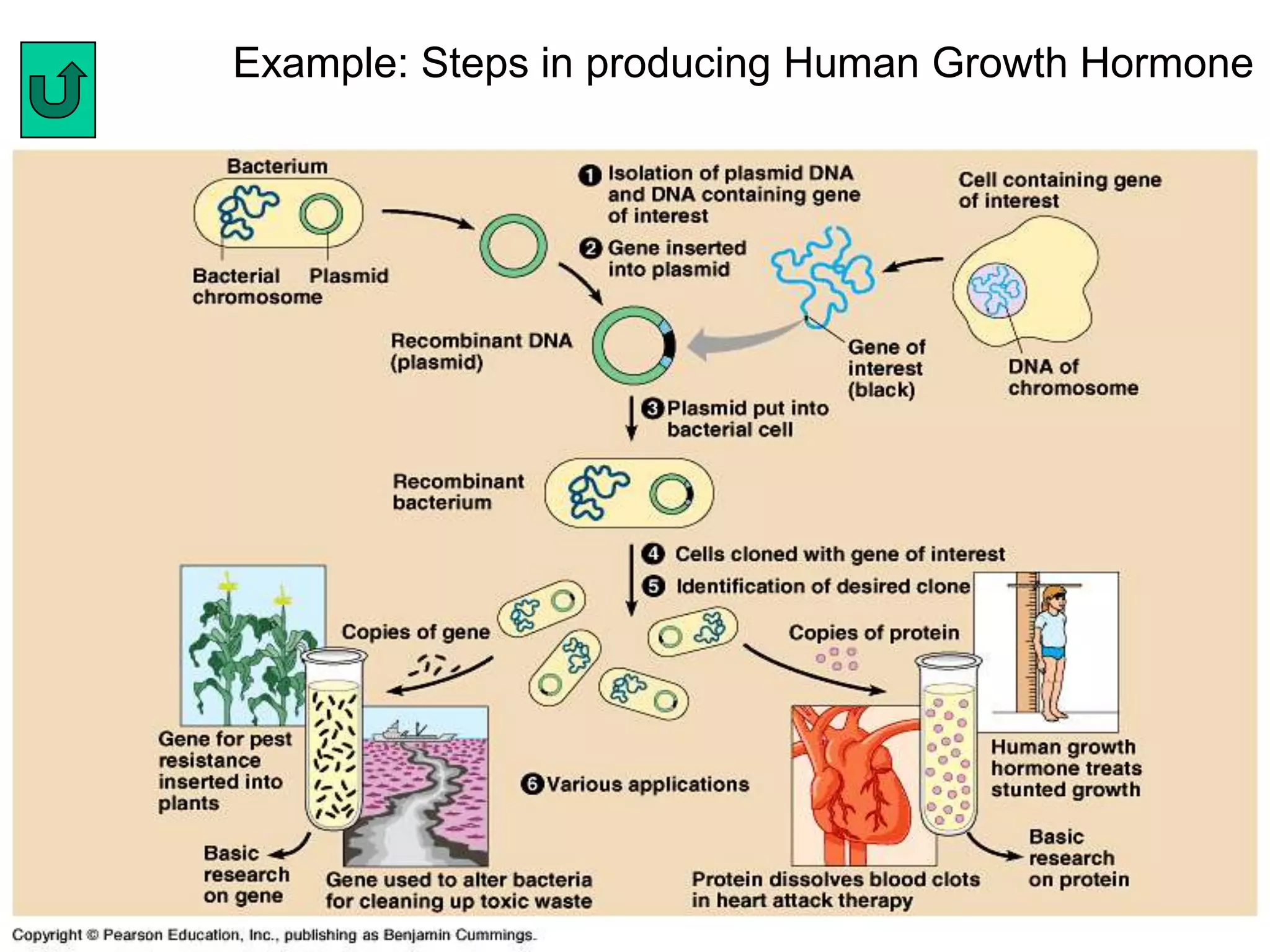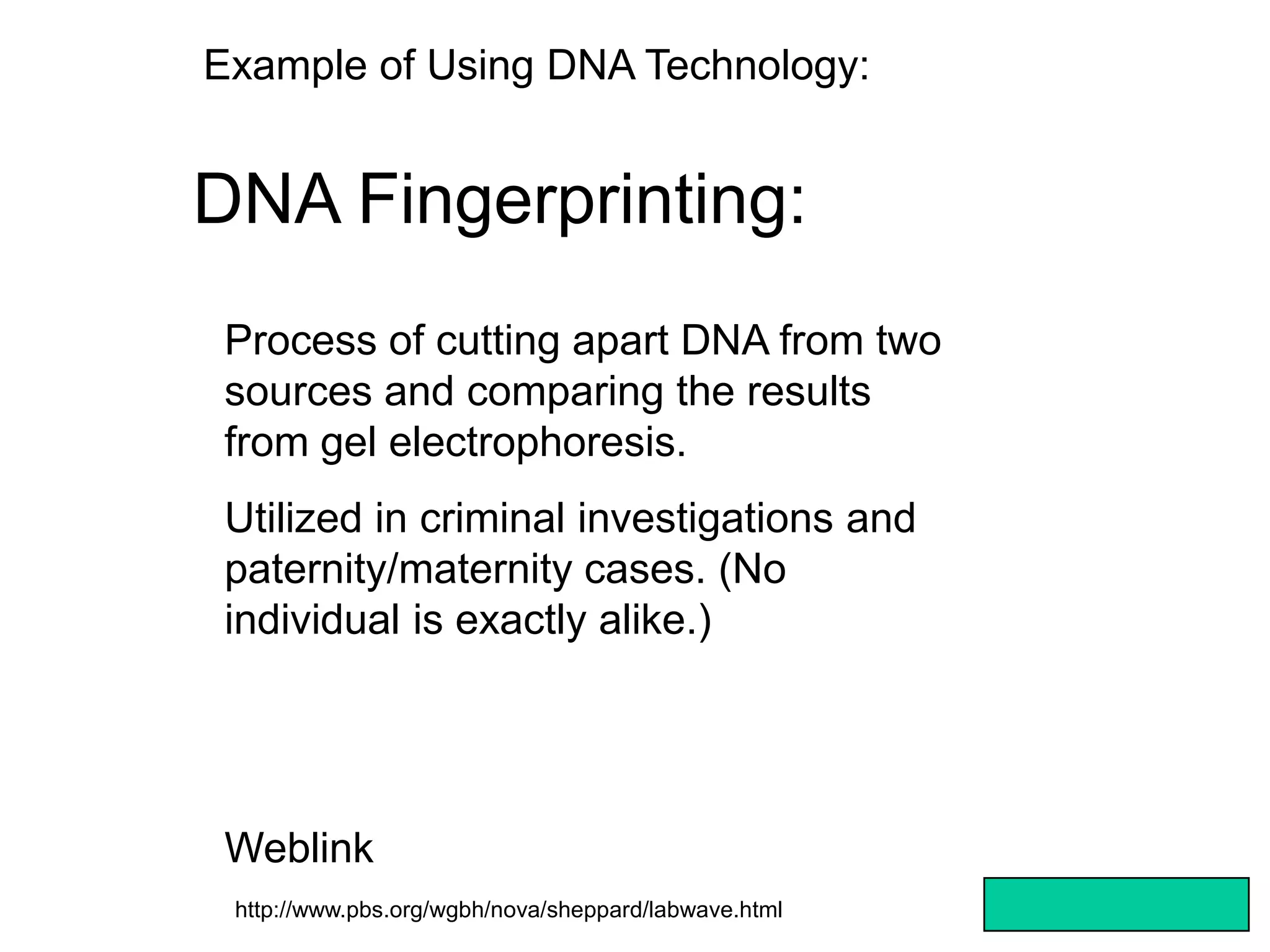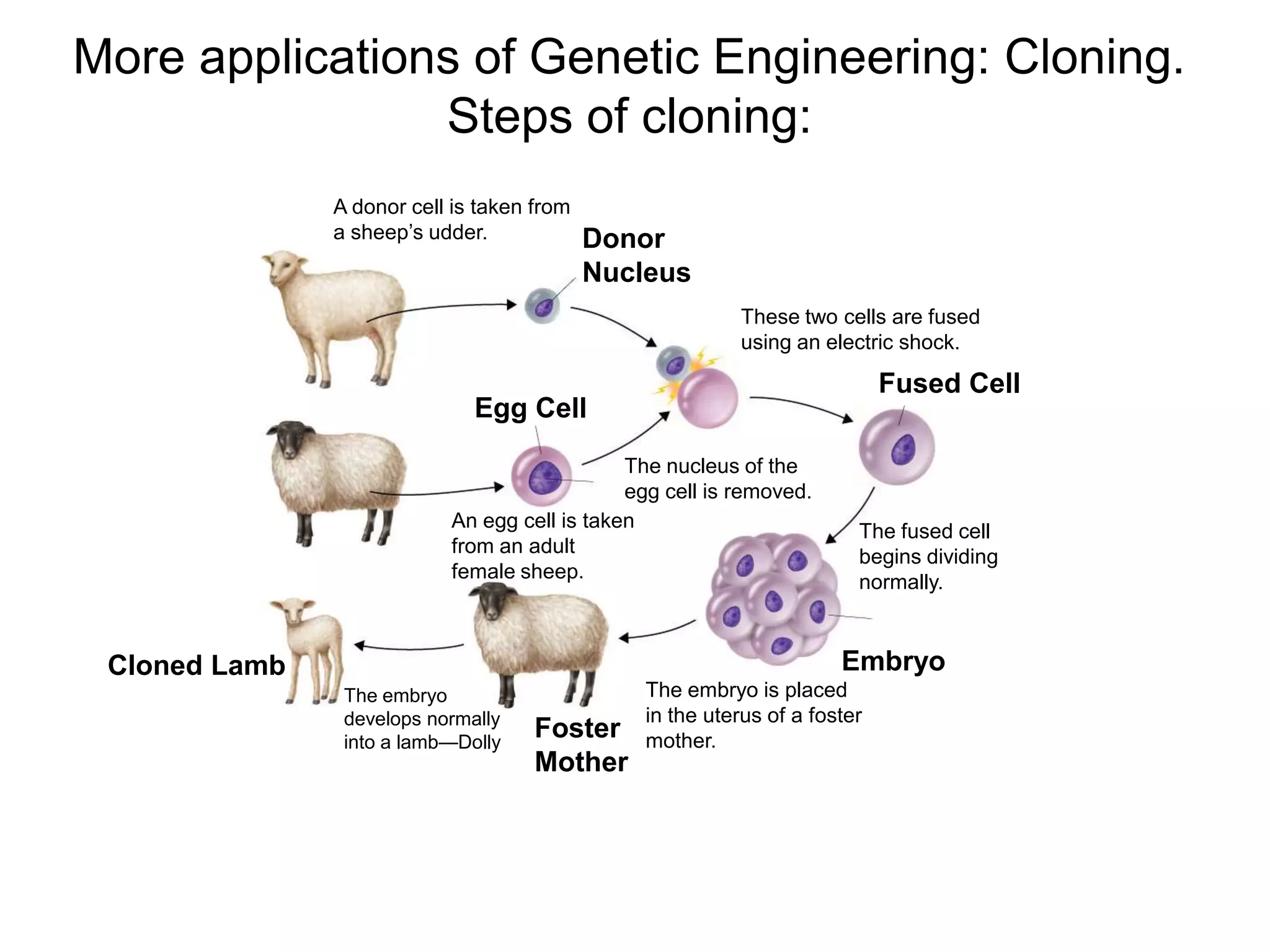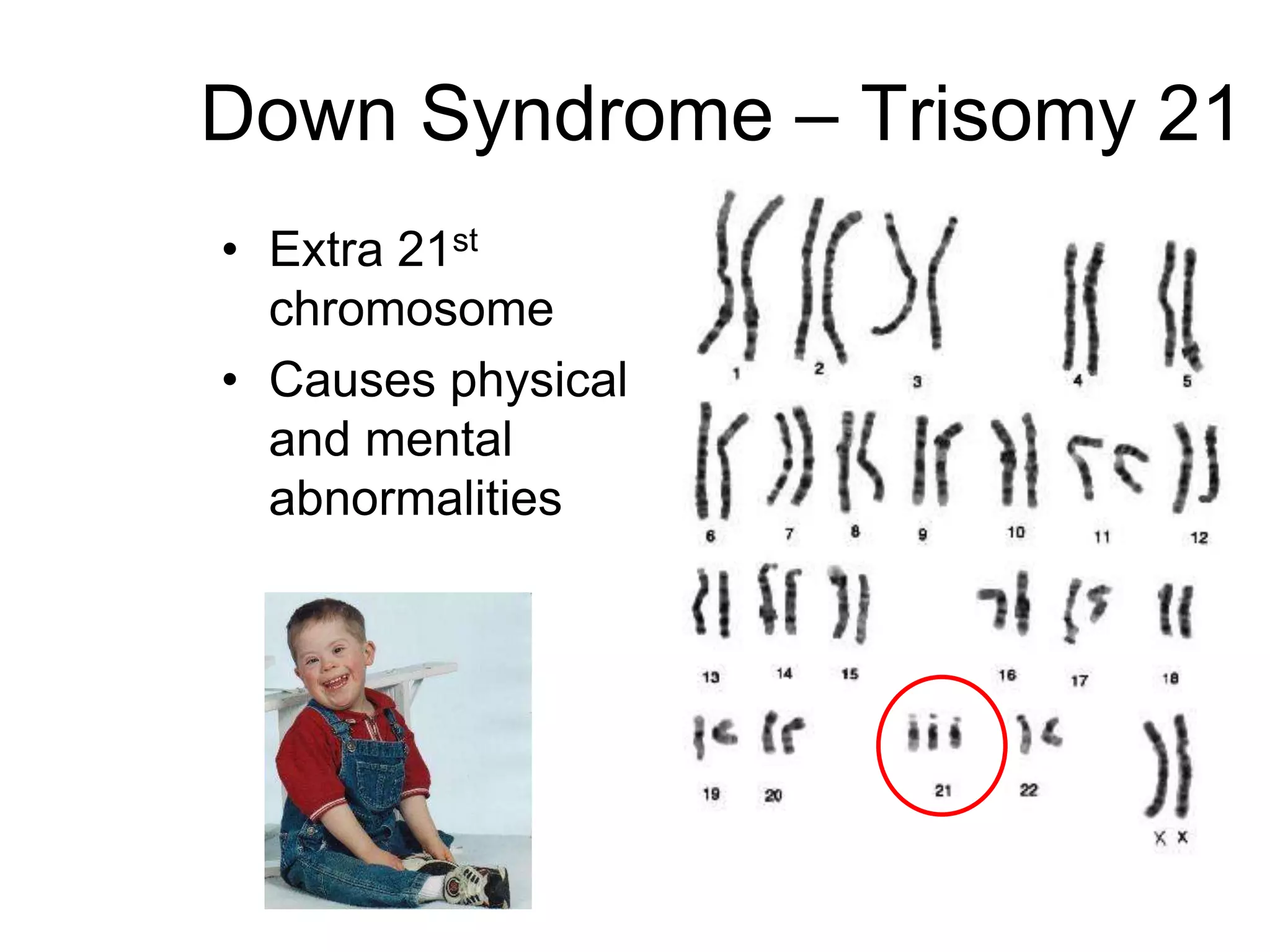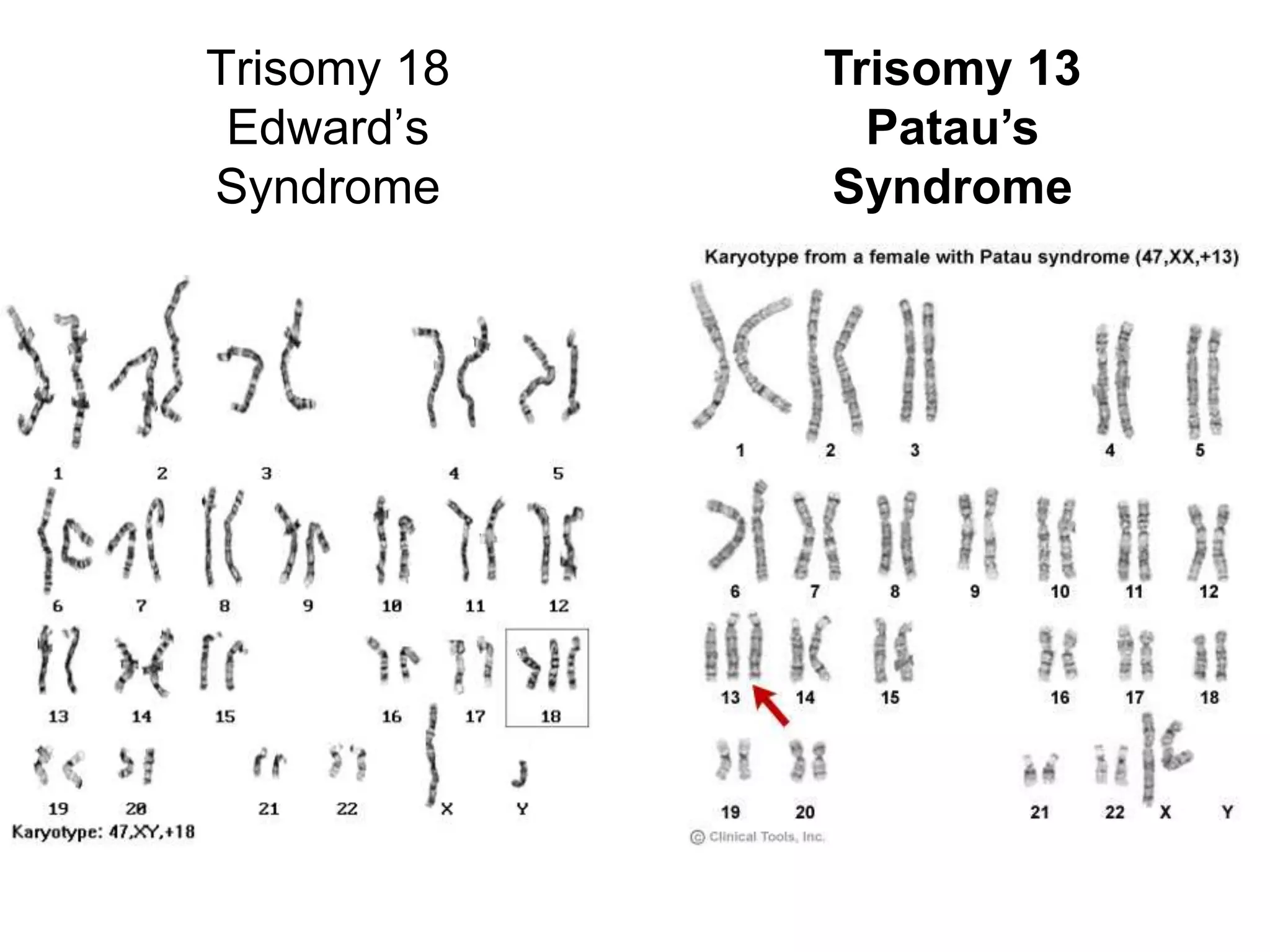1. Gregor Mendel conducted experiments with pea plants in the 19th century that laid the foundations for genetics by establishing basic genetic concepts like dominant and recessive traits, true-breeding organisms, and the inheritance of traits from parents to offspring.
2. DNA technology like genetic engineering allows scientists to cut and splice genes from one organism into another, creating recombinant DNA and transgenic organisms. This has applications in producing human insulin and growth hormones in bacteria.
3. Issues around genetic engineering include safety concerns about creating new pathogens, the ethics of modifying human genes or eliminating genetic defects, and who has access to gene therapies.
